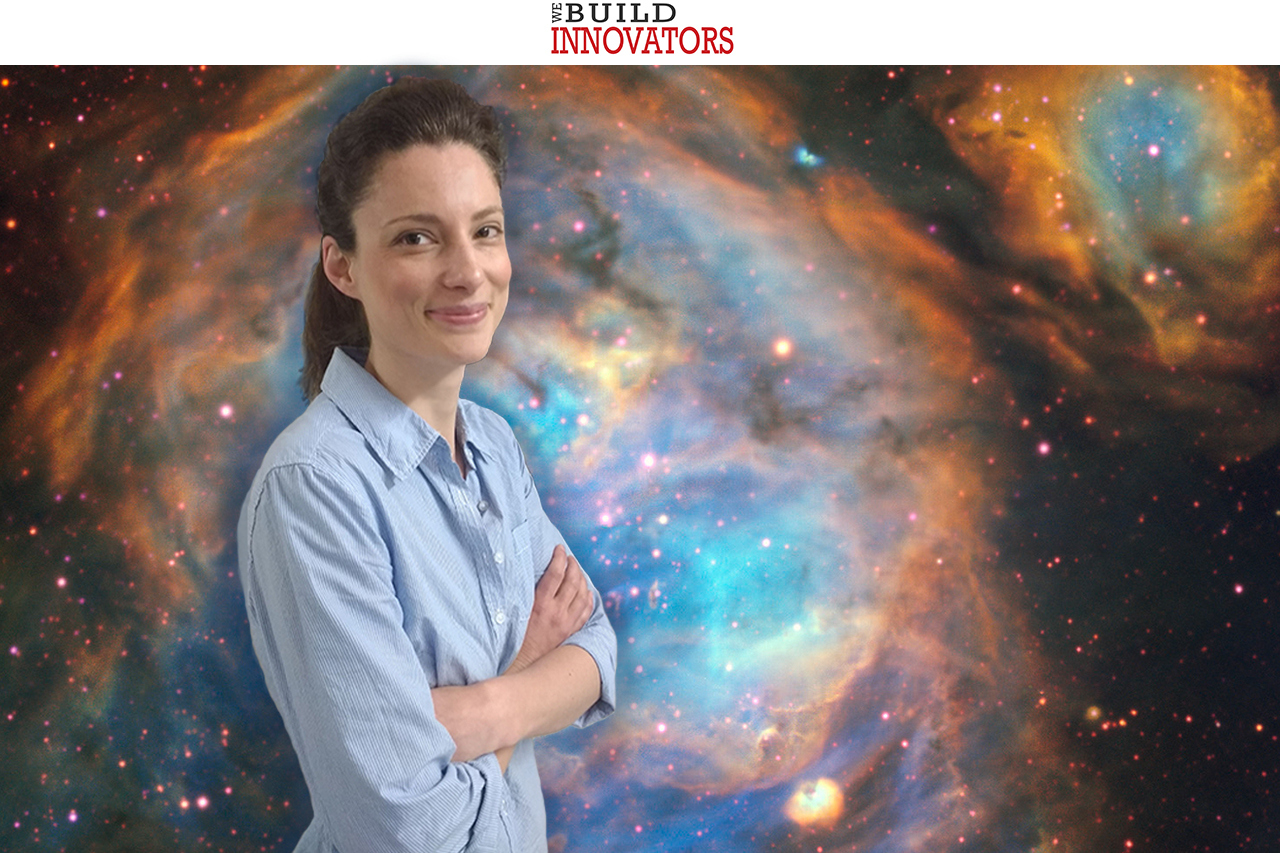The Early Life of Stars

Anna F. McLeod Finds Stellar Jet, Publishes Discovery in Journal 'Nature'
Written by Glenys Young
In West Texas, it's widely known that the most beautiful sunsets can be attributed to dust in the air, as small particles divide the shorter-wavelength blue and green rays, leaving behind the red, yellow and gold that make us "ooh" and "aah."
The same gorgeous colors occur in space, but there, we often can't see it because the dust obscures our view. Until now.
At right: This dazzling region of newly forming stars in the Large Magellanic Cloud was captured by the Multi Unit Spectroscopic Explorer instrument on the European Southern Observatory's Very Large Telescope. The relatively small amount of dust in the LMC and MUSE's acute vision allowed intricate details of the region to be picked out in visible light.
It seems fitting that a Texas Tech University faculty member was on the forefront of this discovery: a beautiful, illuminated cloud with a relatively small amount of dust, allowing astronomers to see the region's intricate details in visible light.
Anna F. McLeod, a postdoctoral research fellow in the Texas Tech Department of Physics & Astronomy and the Department of Astronomy at the University of California-Berkeley, presented this research in a paper recently published in the journal Nature.
A region of the Large Magellanic Cloud (LMC) glows in striking colors in an image captured by the Multi Unit Spectroscopic Explorer (MUSE) instrument on the European Southern Observatory's Very Large Telescope. The region, known as LHA 120-N180 B—N180 B for short—is a type of nebula known as an H II region (pronounced "H two"), and is a fertile source of new stars.
The LMC is a satellite galaxy of the Milky Way visible mainly from the Southern Hemisphere. At only around 160,000 light-years away from Earth, it is practically on our doorstep. As well as being close to home, the LMC's single spiral arm appears nearly face-on, allowing us to inspect regions such as N180 B with ease.
H II regions are interstellar clouds of ionised hydrogen, the bare nuclei of hydrogen atoms. These regions are stellar nurseries, and the newly formed massive stars are responsible for the ionisation of the surrounding gas, which makes for a spectacular sight. N180 B's distinctive shape is composed of a gargantuan bubble of ionised hydrogen surrounded by four smaller bubbles.
At right: This chart shows the location of the HII region LHA 120-N180 B in the constellation of Mensa. This map includes most of the stars visible to the unaided eye under good conditions, and the region of sky shown in this image is indicated.
Deep within this glowing cloud, MUSE spotted a jet emitted by a fledgling star, a young stellar object with a mass 12 times greater than our sun. The jet—named "Herbig-Haro 1177" or "HH 1177" for short—is the first to be observed in visible light outside the Milky Way, as jets are usually obscured by their dusty surroundings. However, the relatively dust-free environment of the LMC allows HH 1177 to be observed at visible wavelengths. At nearly 33 light-years in length, it is one of the longest jets ever observed.
HH 1177 tells us about the early lives of stars. The beam is highly collimated, which means it barely spreads out as it travels. Jets like this are associated with the accretion discs of their star and can shed light on how fledgling stars gather matter.
Astronomers have found that both high- and low-mass stars launch collimated jets like HH 1177 via similar mechanisms, hinting that massive stars can form in the same way as their low-mass counterparts.
"This is an amazing discovery," McLeod said. "The presence of a jet of this size indicates that the massive star has been regularly feeding on matter, therefore strongly supporting the growing evidence that massive stars form via a scaled-up version of the mechanism that forms low-mass stars."
McLeod conducted the research while working at the University of Canterbury in New Zealand. Also involved in the study were scientists from the University of Michigan; the Institute of Astronomy and Astrophysics at the University of Tübingen, Germany; and the UK Astronomy Technology Centre at the Royal Observatory in Edinburgh, Scotland.
College of Arts & Sciences
-
Address
Texas Tech University, Box 41034, Lubbock, TX 79409-1034 -
Phone
806.742.3831 -
Email
arts-and-sciences@ttu.edu
